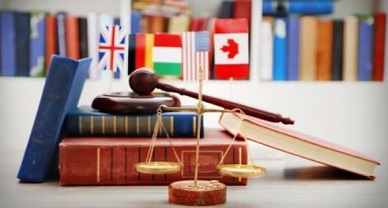Use of Force under International Law With Reference To Russia- Ukraine Conflict
ABSTRACT
Use of force is regarded as one of the most important and sacrosanct principle under the international law. It is considered as a pre-emptory norm that a state would not use force against the sovereignty and territorial integrity of any state without proper justification. However, the conflict between Russia and Ukraine in 2022 raised significant concerns regarding the use of force and the principles of international law that govern it. The conflict began in February 2022, when Russia launched a military invasion of Ukraine, citing concerns for the safety and security of ethnic Russians living in Ukraine. This paper is an attempt to understand the legal framework behind the use of force by nations and how this can attract the responsibility for committing an internationally wrongful act.
Introduction
“No principle of the UN Charter is more important than the principle of the non-use of force as embodied in Article 2, paragraph 4 … Secretaries-General confronts many challenges in the course of their tenures but the challenge that tests them and defines them inevitably involves the use of force.”[i]
This was the statement of the then Secretary General of the United Nations, Kofi Annan at the time of the 2003 Iraq Conflict, which highlights the significance of non-use of force.
Under the ambit of Public International Law, states are not permitted to threaten to use force nor can they use force against other states. The prohibition on the use of force is considered a peremptory norm of international law, which means that it cannot be violated by any state under any circumstances. States being a subject to International Law enjoys both rights and obligations, and this prohibition on use of force is the most important obligation of the states under the International Law.
This paper examines the use of force by a nation against other sovereign nations, the legal framework that governs the use of force and the repercussions of such actions. It also describes about the meaning of force in International Law, and other related concepts, with reference to the UN Charter. The paper also has a special focus on the recent Russia- Ukraine war, and the impact of use of force in the war, and how the responsibility can be attributed to the states for the wrongful act committed by them by using the force against other nation.
Use of Force in International Law
The use of force has been a long-standing phenomenon in international relations and has been considered to be directly linked to the sovereignty of states-the limitless power wielded by states to use all possible means to guard and protect their interests. With the founding of the United Nations, the legitimacy of the use of force by individual states under international law has been substantially narrowed. The Charter of the UN states in its Preamble that the UN is established to save succeeding generations from the scourge of war; and its substantive provisions obligate the Member States of the UN to settle their international disputes by peaceful means under Article 2(3)[ii] and to refrain in their international relations from the threat or use of force against the territorial integrity or political independence of any State, or in any manner inconsistent with the Purposes of the United Nations, as mentioned under Article 2(4). One of the most important principles of International law is the prohibition on states against the use of force by them. Article 2(4) of the UN Charter forbids the states from using force in their international relations. It provides that a UN Member state cannot threaten or use force against the territorial integrity or political independence of another state, or in any way that diverges from the purposes of UN.[iii] It also prohibits the unilateral use of force or force not used in self defence. Article 2(4) is the essential ingredient of the UN Charter as it provides a better collective security system, but its interpretation is still debated since certain terms of the Article has not been explained properly and in detail.
[Image Sources: Shutterstock]
Basic understanding of Article 2(4) is that only military force is prohibited under this Article. The reason behind this can be that since the United Nations was formed after the Second World War in response to the grave violence and atrocities, the force referred to in the provisions means the kind of force which was used during the World War, which was only military force. Even though only military force is prohibited under Article 2(4), it has been made clear by the United Nations that economic aggression is also not acceptable when used to coerce other states.[iv] Additionally, a threat of force is also a form of coercion.[v] Threat is unlawful under Article 2(4) and the force used for threatening would also be illegal when used.
No State shall use force in a way that is contrary to the objectives of the United Nations, as stated in Article 2(4) of the United Nations Charter. Sometimes, states claim that their use of force is consistent with UN objectives because it is done to safeguard human rights or avert humanitarian catastrophes. Since one of the key objectives of the UN is to prevent humanitarian catastrophes, employing force to stop a State from infringing on the rights of its inhabitants or endangering their lives is completely at odds with Article 2(4). Since humanitarian intervention is not permitted by the UN Charter, it is prohibited unless approved by the Security Council.
Exceptions to the Prohibition of the Use of Force
There are only two exceptions to the prohibition on the use of force under the International Law as provided by the UN Charter and these are:
- Use of force by States in Self defence (Article 51)[vi]
- Under the auspices of a UN Security Council authorization, the forces commonly called ‘collective security’ for maintaining peace and security (Article 42)[vii]
Article 51 of the UN Charter provides that the Self defence can be invoked only in response to an armed attack against a UN member state. Since Article 2(4) of UN Charter prohibits the use of force in international relations, the author of an armed attack is traditionally understood as another state and not a non-state actor such as a terrorist group.[viii] Interpretation of Article 51 regarding the term “armed attack” can be understood as attack of one territory by the regular forces of another state by land, air, sea or space. But it is often debated that whether armed attack can only be levied by regular forces.
The International Court of Justice defined armed attack as “an attack that occur on a significant scale by armed bands or groups on behalf of a state as to amount to an actual armed attack conducted by regular armed forces or its substantial involvement therein”.[ix] The International Court of Justice in the Hostages case[x] had used the term armed attack with regard to “the actual storming of the embassy and the hostage taking of its personnel”. Since the International Court of Justice work in a consistent manner, it is to be believed that armed attack in the cases of Nicaragua and Hostages would come under the scope of Article 51 of the United Nation Charter. However, this use of force in the exercise of self defense is not available in case of force used on a state by any non state actors, such as terrorist attacks.
Author: Ipsita Sinha, in case of any queries please contact/write back to us at support@ipandlegalfilings.com or IP & Legal Filing.
REFERENCES
[i] R. Zacklin, The United Nations Secretariat and the Use of Force in a Unipolar World: Power v. Principle (2010), pp. xii-xiii.
[ii] UN Charter, 1945, Article 2(3).
[iii] UN Charter, 1945, Article 2(4).
[iv] UN General Assembly, Declaration on Principles of International Law concerning Friendly Relations and Cooperation among States in accordance with the Charter of the United Nations, 24 October 1970, A/ RES/2625(XXV), available at: http://www.refworld. org/docid/3dda1f104.html (Last visited May 4, 2023)
[v] Romana Sadurska. “Threats of Force” The American Journal of International Law, vol. 82, no. 2, 1988, pp. 239–268. JSTOR. Available at www.jstor.org/ stable/2203188. (Last visited May 4, 2023)
[vi] UN Charter, 1945, Article 51.
[vii] UN Charter, 1945, Article 42.
[viii] Alexandra Hofer, The Use of Force in International Law, https://blog.oup.com/2018/11/international-law-regarding-use-force/#, (Last visited May 4, 2023)
[ix] Nicaragua v. United States of America, 1986 ICJ REP
[x] United States of America v. Iran, 1981 ICJ REP



